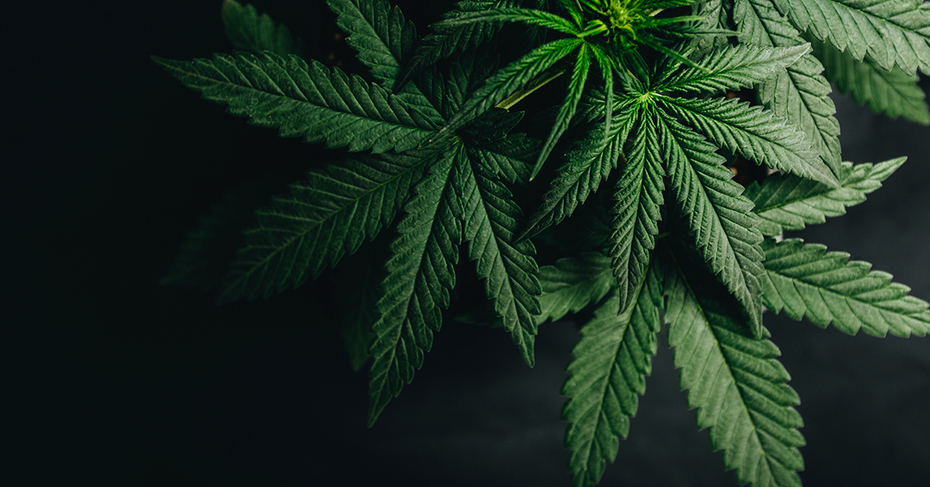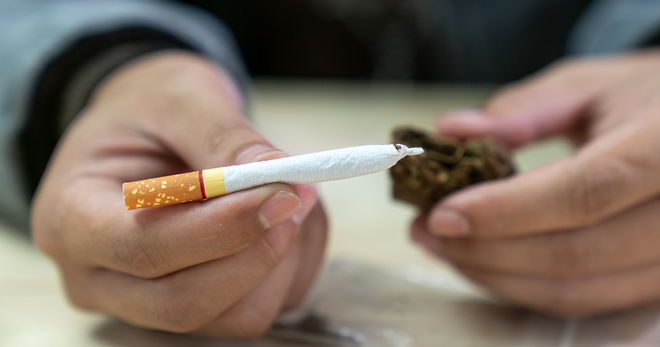Action needed: Youth and marijuana
Truth Initiative is dedicated to achieving a culture where youth and young adults reject tobacco. Because tobacco and marijuana use are closely linked, we are often asked about our position on youth marijuana use. Our bottom-line position is clear: youth should not be using marijuana and we should develop policies that prioritize the protection of young people. This policy statement provides more detail and recommendations to achieve that goal.
RAPIDLY-EVOLVING LEGAL LANDSCAPE
Marijuana, its legal status, and how and whether it should be criminalized, limited to medicinal distribution, or fully legal for adult consumption has been a source of significant debate in the United States — particularly over the last decade.
Marijuana is now legal for adult consumption in 11 states and for medicinal use by adults in 22 more. It is also now legal in Canada for adult medicinal and recreational use. According to Gallup, in 2000, only 31% of Americans supported legalization of marijuana for adult recreational use. By 2018, that number had risen to 66%, with support from a majority of both Republicans and Democrats.
The issues around marijuana policy are complex, involving economics and social justice, the impact of criminalization on minority communities, health and addiction, workplace and public safety, personal freedom for adults and the possible dangers that come from a competitive marketplace aggressively seeking new customers. Amid all these concerns, there is widespread agreement that young people should not be exposed to marijuana.
HEALTH EFFECTS OF USE ARE MORE DANGEROUS FOR YOUNG PEOPLE
Marijuana poses significant harms for young people (see the Truth Initiative marijuana fact sheet). Youth are particularly vulnerable to psychoactive drugs, and this is as true for marijuana as it is for tobacco and alcohol.
- Marijuana use can be dependence-inducing and people who begin using before age 18 are 4 to 7 times more likely to develop marijuana use disorder.
- Early and heavy marijuana use is linked to a lack of economic and social attainment for young people.
- Early and heavy marijuana use is linked to increased risk of psychiatric disorders including psychosis, depression, anxiety and other substance use disorders.
- Frequent smoking of marijuana increases the risk of lung issues, such as bronchitis.
MARIJUANA POLICIES SHOULD PROTECT YOUNG PEOPLE
Protecting young people from marijuana use and exposure should be a key element of any regulatory approach. As we detail in our fact sheet, states that have fully legalized marijuana for adult use have taken a variety of policy measures designed to prevent youth use. For now, the effect of recreational legalization on youth use is not entirely clear. In Colorado, recreational laws have as of yet had no measurable impact on rates of youth use. Two studies in Washington, where recreational marijuana use is permitted, have found both an increase and a decrease in youth use. A more recent national study found that legalized adult marijuana use for non-medical purposes has resulted in an increase in youth use of around 11%. At the same time, though, adult use in states with legal marijuana has clearly increased.
LESSONS FROM TOBACCO CONTROL: EARLY REGULATORY ACTION IS CRITICAL TO PROTECT YOUNG PEOPLE
The legal market of marijuana is in its relative infancy. Our experience with tobacco, and in particular the rise of e-cigarettes, has demonstrated that, when a potentially dependence-inducing drug becomes commercialized, markets expand to attract youth. This, in turn, creates life-long recurring heavy users who become a critical revenue stream and driving factor in ongoing business models.
The history of tobacco use provides an instructive example. A significant contributor to the tobacco epidemic was the collective failure to recognize the product’s harms. This error was due in large part to the tobacco industry’s successful concealment of related health effects, which made it difficult to act aggressively to curtail youth use once those harms were known. In tobacco control policy, we are still struggling with those issues today. The current debate around e-cigarettes is illustrative. Where the government has failed to act to protect public health, commercial interests have stepped in to expand their markets as aggressively as possible, particularly to young people.
In 2011, 1.5% of high schoolers regularly used e-cigarettes. Today that number is 27.5%. With marijuana, we have an opportunity to avoid those failures and a repeat of the tobacco epidemic.
Below we identify key dangers as the market develops and potential policy measures to address those concerns.

Youth should not be using marijuana and we should develop policies that prioritize the protection of young people.
LEGALIZATION LEADS TO COMMERCIALIZATION: POLICIES TO PREVENT SALES TO YOUTH
At the federal level, marijuana remains illegal. But as it becomes decriminalized in more places, local markets will develop to meet the demand. As it now stands, there is no national marijuana industry and thus no national policy to regulate its use, advertising and purchasing policies. To guide states and future national policies, we offer these recommendations:
- Age of sale and entry set at 21
Every state with legalized marijuana for adult use has used 21 as the age of sale. As with tobacco, we support these policies. Some states have taken the further step of requiring identification to enter a marijuana retail establishment, and we support this step as a significant barrier to entry to marijuana-only retail stores. - No sales of alcohol or tobacco with marijuana
Most states with legal retail of marijuana restrict the sale of liquor and tobacco in the same establishment. Today, more than 70% of tobacco sales occur in convenience stores and gas stations. Since single-item stores also make it easier to enforce age restrictions, this policy can help to prevent underage sales. - Local control
The tobacco industry figured out early on that establishing weak protections at a state level with provisions preempting local control was an effective strategy for protecting their markets. State governments must realize that the sale of a mind-altering and, particularly, dependence-inducing drug is an important issue for local control. Some states have allowed for wide local discretion, and we encourage all states considering a marijuana policy to allow local control of things like zoning, advertising limits and hours of operation. - Clean indoor air
Clean indoor air laws have been key to protecting bystanders from the harmful byproducts of combustion and vaping. This rationale for smoke-free policies should also lead any combusted or vaporized marijuana to be included in such laws. Clean indoor air laws also limit opportunities to publicly use cigarettes and have contributed to the de-normalization of the behavior, particularly among youth. This is yet another reason to include marijuana in such laws. Many states have restrictions, but we are already seeing efforts to roll those back. Such efforts should be resisted. - Volume restrictions
Most states have limits on the amount of product that can be purchased in a retail transaction, and we support such limitations to restrict resales of marijuana. Volume is a major problem with youth tobacco transactions, with many young people obtaining tobacco products from friends who are of legal age to purchase. Volume restriction policies can help to prevent these practices. - Taxation
In tobacco policy, price control is one of the most effective tools for limiting youth tobacco use. Taxes should be applied to marijuana products as well. Funds raised through such taxes can then go toward marijuana research and on youth prevention of marijuana use.
MARKETING
Many states have adopted marijuana marketing restrictions similar to those affecting tobacco, such as limits on where marijuana can be marketed and sold and warning labels on the product. We recommend that all states adopt these marketing restrictions. To the extent allowed by law, we would also recommend that the plain packaging adopted by some countries for tobacco be applied to marijuana sales.
We also call for media producers and distributors to halt depictions of marijuana use in youth-rated programs or in content heavily consumed by youth. Tobacco depictions in media viewed by youth drive tobacco use. The same logic follows for depictions of drug and alcohol use, and media companies should follow the same rules.
PRODUCT REGULATION
One trend in tobacco is the constant evolution of products. For example, e-cigarettes were just introduced about a decade ago, but the design, amount of nicotine and ability to absorb nicotine quickly has increased rapidly in products. Although the 2009 Tobacco Control Act eliminated flavors in cigarettes, we have seen a wide proliferation of flavors in non-cigarette products, and particularly e-cigarettes.
We see similar issues in the marijuana market: flavors that appeal to youth, packaging echoing candy and breakfast cereals, increasing THC amounts, and the development of extremely potent distillates for inhalation. As with nicotine, we believe a marijuana and THC market should be carefully regulated with an eye toward public health and recommend the following policies:
- Clear labeling
All products should be prominently marked as containing THC, including clear descriptions of content and serving sizes. - Potency limits
States should consider potency limits for sales. High potency products present a higher possibility of abuse and dependence liability as well as make it easier to develop resale markets. - Flavors
Inhaled products should not include flavors that appeal to kids and especially should not be marketed with packaging that appeals to youth. This includes limiting edibles so they cannot be easily mistaken for kid-friendly products (e.g., gummy bears). - Marijuana-only products
With marijuana business interests now being acquired by alcoholic beverage and tobacco companies, the possibility for “combined” products are obvious (e.g., a marijuana / tobacco hybrid cigarette). Regulators should not allow the sale of THC combined with another psychoactive drug, such as alcohol or nicotine. - Product registration
All products should be registered with the appropriate regulator with descriptions of the product, along with how it complies with relevant regulatory requirements.
Our long history of responding to the tobacco epidemic inform the above policy recommendations. With marijuana we have a window of opportunity to put these policies in place proactively instead of as a response to an epidemic. These recommendations are not exclusive, and we may find with experience other approaches are warranted. To this end, we recommend that a portion of tax revenue received from any legalization policy be dedicated to monitoring usage patterns and studying the effectiveness of policy interventions. As the nation continues to debate and explore approaches to an appropriate legal framework around marijuana, we owe it to our youth to move responsibly.
More in substance use
Want support quitting? Join EX Program
By clicking JOIN, you agree to the Terms, Text Message Terms and Privacy Policy.
Msg&Data rates may apply; msgs are automated.





